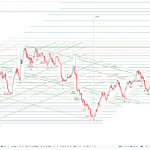Two weeks ago, when the January Jobs Report showed wage gains up 2.9% from a year ago, triggering inflation fears, the bond market freaked out and stocks started tanking.
That’s behind us now. Or is it?
Sure, stocks have recovered and the 10-Year Treasury yield is lower, but inflation fears are still out there – and that means bond vigilantes are lurking in the shadows and could hijack markets again.
Here’s the truth about inflation, the origin of these bond vigilantes, and how the market will react to all of this…
The Great Bond Massacre
Bond vigilantes are Treasury bond market investors and traders who protest monetary or fiscal policies they consider inflationary by selling and shorting Treasury bonds, which increases their yields.
They’re vigilantes because they theoretically act as a restraint on the government’s ability to overspend and over-borrow by raising borrowing costs as they push interest rates higher.
The term first originated in 1993 during the Clinton administration, when bond sellers pushed US 10-year yields from 5.2% to just above 8.0% over market concerns about federal spending.
That sell-off became known as the “Great Bond Massacre.”
Starting last September, with U.S. GDP growth already expected to pick up, new bond vigilantes began selling Treasuries anticipating massive tax cuts and the president’s push for infrastructure spending would stimulate the economy above trend and spark inflation.
From just above 2% in September last year, 10-year yields spiked to 2.85%. When higher than expected wage gains numbers came out two weeks ago, the 10-Year yield shot up to 2.95%, a four-year high, triggering an across the board stock market selloff.
Now, with stocks having recovered three-quarters of their losses and the 10-Year Treasury yield back down to 2.84%, stock and bond investors seem to think inflation fears are overblown.
It’s Called the “Amazon Effect”













Leave A Comment